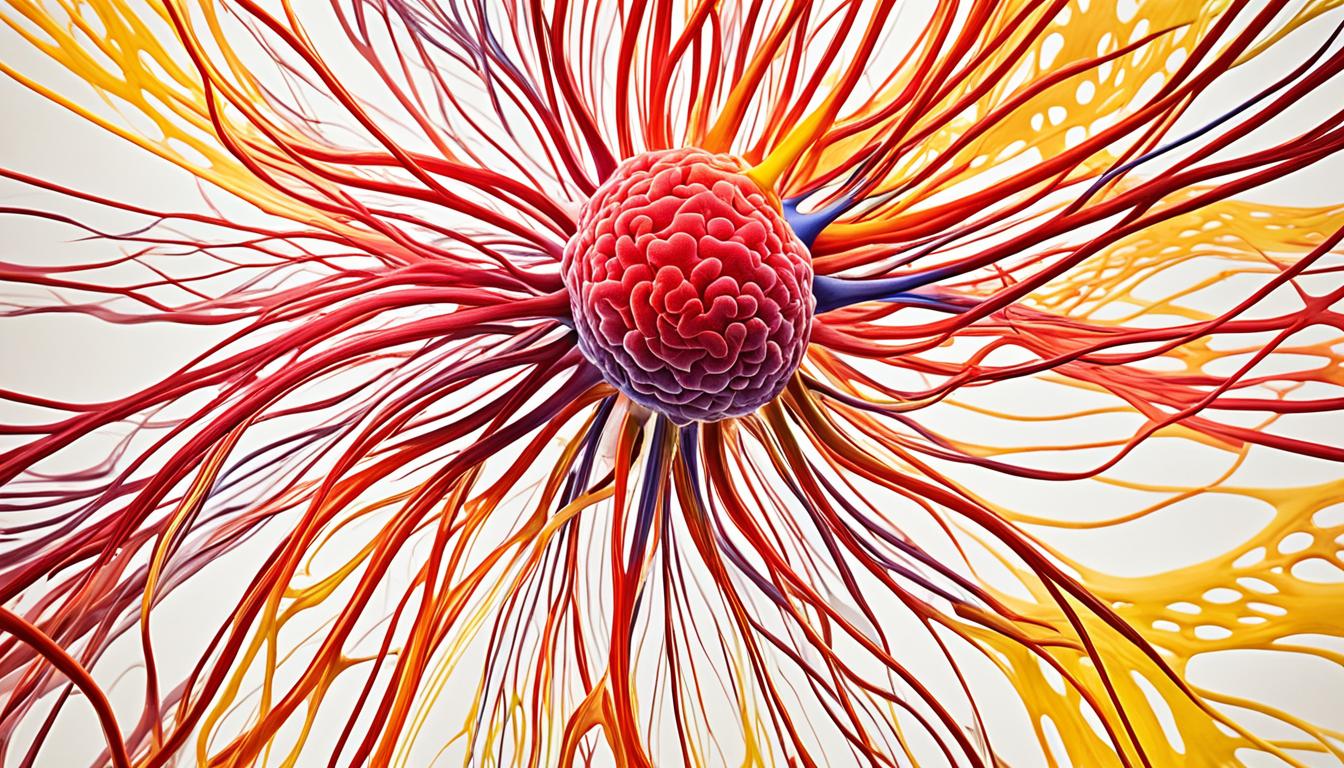Neuroblastoma is a rare kind of cancer in kids under 5. It comes from nerve tissue, often starting in the adrenal glands. But it can be in the chest, neck, or pelvis too. Signs are fatigue, less eating, and finding a lump in their chest, neck, or belly.
We don’t know the exact cause, but genes may be involved. Doctors check with exams, blood tests, and images to diagnose it. Finding it early and knowing exactly what it is helps with the right treatment.
Doctors treat neuroblastoma with chemo, surgery, radiation, and stem cells. They choose which based on the child’s condition and risks. The care tries to get rid of cancer while keeping the child as healthy as possible.
Key Takeaways:
- Neuroblastoma is a rare childhood cancer that develops in nerve tissue.
- Symptoms include fatigue, decreased appetite, and the presence of a lump in the chest, neck, or belly.
- Exact causes are still unknown, but genetic abnormalities are believed to play a role.
- Diagnosis involves medical examinations and diagnostic tests.
- Treatment options may include chemotherapy, surgery, radiation therapy, and stem cell therapy.
Neuroblastoma: Symptoms, Diagnosis, and Stages
Neuroblastoma is the most common malignant solid tumor in children. It starts from tissues that make up the sympathetic nervous system. This cancer mainly appears in the adrenal glands but can show up in other areas like the neck, chest, or pelvis.
The signs of neuroblastoma change based on the tumor’s size, where it is, and if it has spread. Some common symptoms are:
- Presence of an abdominal mass
- Uncontrolled eye movement
- Swelling and bruising around the eyes
- Changes in urination
- Pain or weakness in bones
- Anemia or bruising
- Paralysis or weakness in the spinal cord
- Diarrhea
- Fever
- High blood pressure
Doctors find neuroblastoma through a detailed medical exam and several tests. These include:
- Blood tests
- Imaging studies such as ultrasonography, CT scan, and MRI
- Bone scans
- MIBG scans
- Bone marrow biopsy
Based on the INSS, neuroblastoma has various stages. These go from a tumor in one place to a tumor that has spread widely. Stages help show how far the cancer has gone and its severity.
| Neuroblastoma Stages | Description |
|---|---|
| Stage 1 | The tumor is confined to one area and can be completely removed through surgery. |
| Stage 2A | The tumor is on one side of the body and has not spread. It can be completely removed through surgery. |
| Stage 2B | The tumor is on one side of the body and may be difficult to completely remove through surgery. |
| Stage 3 | The tumor has spread to lymph nodes on both sides of the body or has not been completely removed through surgery. |
| Stage 4 | The tumor has spread to other parts of the body, such as bone, liver, skin, or distant lymph nodes. |
| Stage 4S | Typically occurs in infants. The tumor has spread to the liver, skin, or bone marrow, but not to other distant parts of the body. |
Knowing the symptoms, diagnosing neuroblastoma correctly, and understanding the cancer stage are key. They help in making a good treatment plan and telling how well the child could do.
Neuroblastoma Treatment and Prognosis
The neuroblastoma treatment is complex and personalized. It considers the child’s age, health, and cancer characteristics. Treatments include surgery, chemotherapy, radiation, and more. They aim to cure while managing side effects, with research always looking to better these methods.
The prognosis of neuroblastoma varies. It depends on many factors like tumor size, spread, and treatment response. Knowing these can help predict the child’s chances of survival. For instance, low-risk cases usually have survival rates over 90%.
After treatment, regular check-ups are crucial. They monitor progress and watch for any signs of the cancer coming back. Imaging studies are common to ensure quick action if needed.
Neuroblastoma’s care involves a lot, but science is always making progress. Thanks to medical research, new treatments are offering more hope to affected children.

